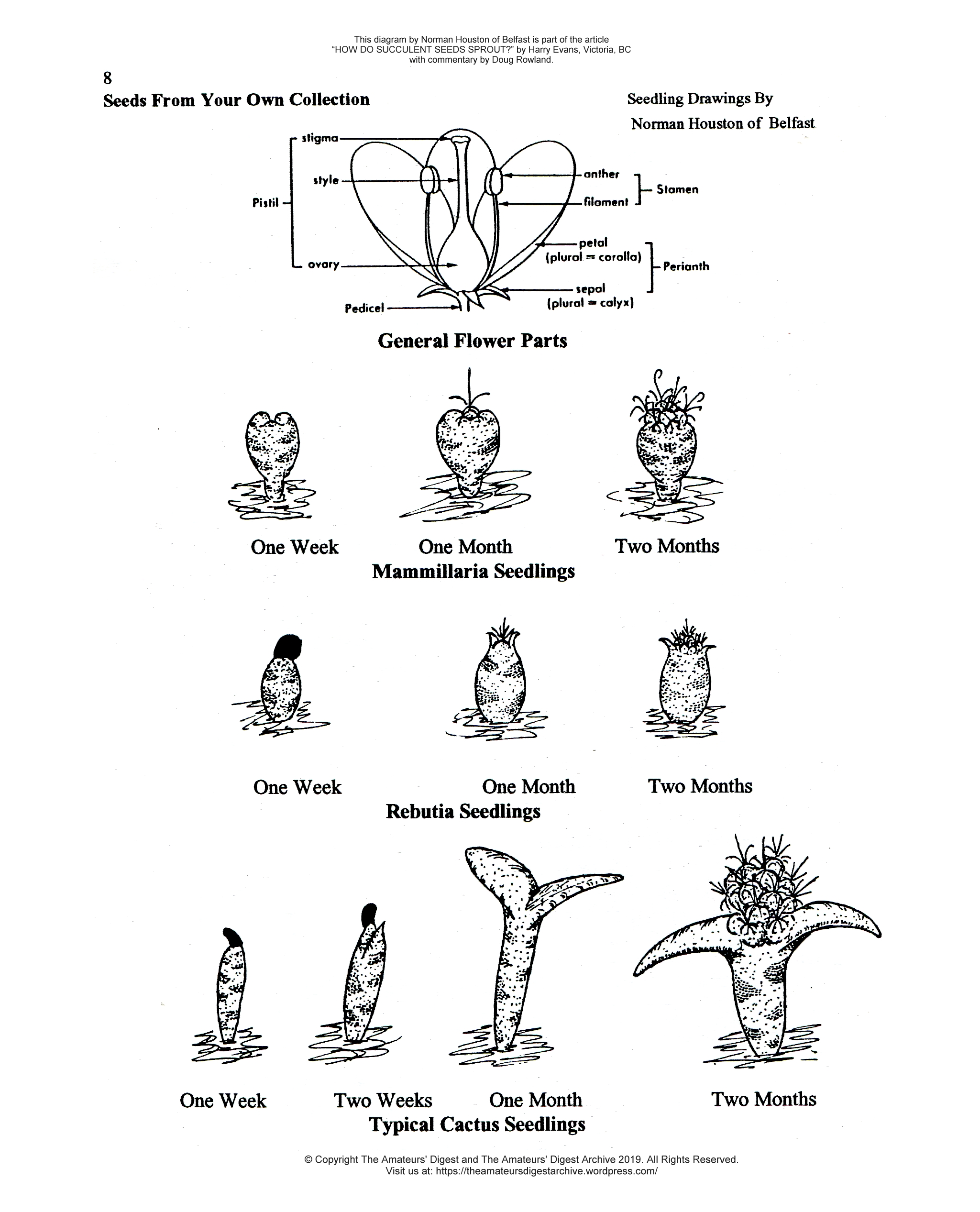By Harry Evans, Victoria, BC
![]()

Let’s talk about seed structure. Each seed has a seed coat which moisture has to penetrate before the seed will sprout. As seed coats differ in thickness and strength, moisture takes different periods of time to penetrate the seed coat. Some seeds will therefore germinate in three to four days. Others may take three to four weeks or longer. Germination of thicker seeds can be aided by a process called ‘scarification’ which simply means abrasing the seed coat.
Seeds vary greatly in size from dust-like particles to much larger and each seed contains a food supply in the form we refer to as food leaves. It is these stored foods wihch we eat in grains, nuts, beans, peas, etc. As the plant’s mature leaves form, they start to manufacture their own food. At this tme the original food leaves shrivel and are of no more use. There are exceptions to all rules, however. Some seeds which do not have food leaves such as orchids, compensate for this by producing great quantities of seeds.
Each seed contains an embryo plant and when germination starts the seed coat splits, a rootlet starts to grow down into the soil mix and a sprout, carrying food leaves, starts upward. The seed has a sense of the force of gravity at this time. (See note on gravity later on).
In order for seeds to sprout, there are four important factors to consider:
1. Proper depth of planting
2. Water
3. Air
4. Temperature
Proper Depth of Planting
I would say most failures in sowing seeds occur by burying them too deep. A good rule is to sow your seeds to a depth of two to four times the diameter of the seeds. Small, dust-like seeds are scattered on top of the soil and gently firmed down to make good contact with the soil.
Water
After you have planted your seeds, water the flat well from the bottom and never allow the soil to dry out during the germination period. As germination occurs, the seed coat splits, and a rootlet occurs which will then start downward and the sprout carrying the food leaves will start towards the surface of the soil, responding to gravity.*
Air
Keep in mind air has to penetrate the soil so do not compress the soil too hard but just enough so the seed coats make good contact with the soil.
Temperature
The preferred temperature for seed germination is 70°F day and night. There are exceptions and the instructions on the seed packet are a great help. Heating cables with a built-in thermostat set at 70°F are carried by most garden centers.
Doug Rowland says …
“The point about gravity (mentioned in the foregoing article) is that when you germinate any seeds, the stem goes up and the root goes down according to the earth’s gravitational pull. If you germinate seeds, say in a wet moss peat in a jar or plastic bag, and then rotate the bag continuously, the seed becomes confused and cannot identify the earth’s gravitational pull and will send sprouts and roots in all directions!
Source: The Amateurs’ Digest, Ed. Marina Welham, “How Do Succulent Seeds Sprout?” by Harry Evans, Victoria, BC, with drawings by Norman Houston of Belfast and commentary by Doug Rowland. From the 1994 Special Edition, ISSN 0843-9235
Read the whole 1994 Special Edition of The Amateurs’ Digest, now online.
__________
* This is Kathleen, Marina’s daughter. I don’t know anything about cactus plants, but I realized I do know two words I can add here. “Phototropism” is an orienting response to light, as when “the sprout carrying the food leaves will start towards the surface of the soil”. Whereas, “geotropism” is “an orienting response to gravity” as when “a rootlet occurs which will then start downward”. The word “tropism,” part of both terms, is defined this way: “an involuntary orienting response; positive or negative reaction to a stimulus source”. In other words, gravity is a stimulus attracting a root down, and light is a stimulus attracting a sprout upward. Definitions are from WordWeb 6.8, my desktop dictionary from Princeton (free version).
![]()
